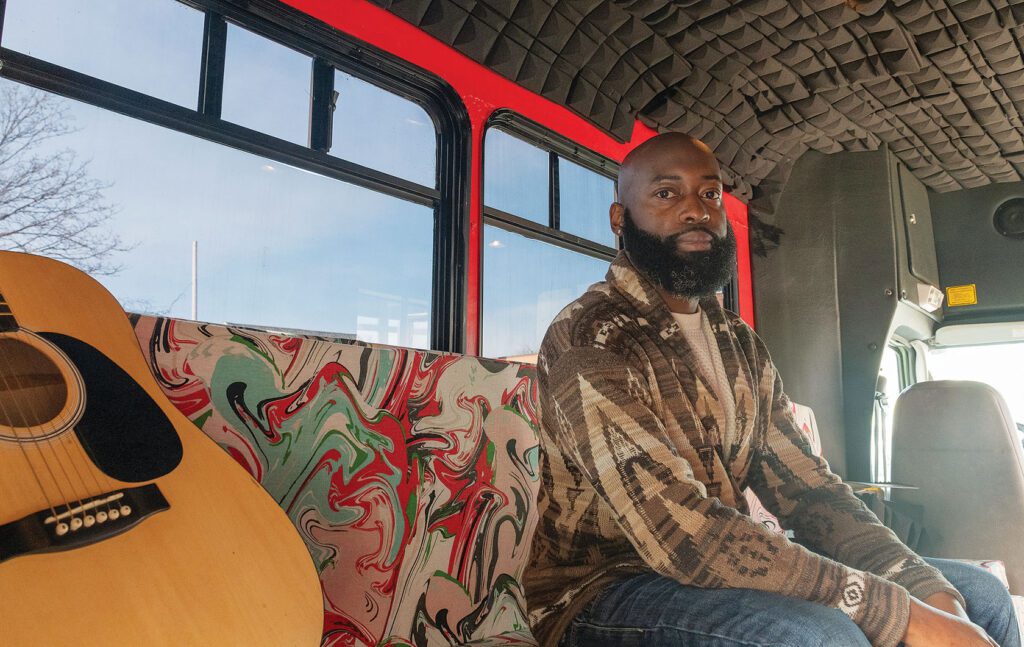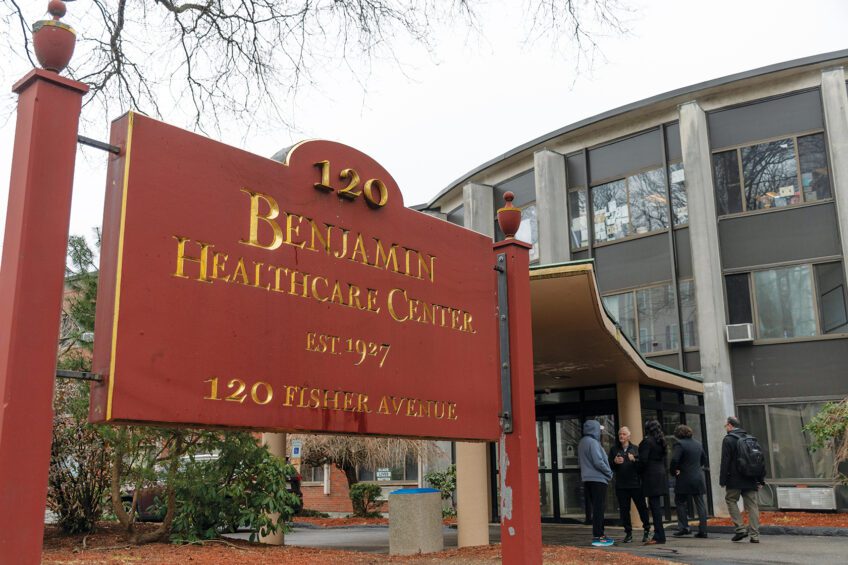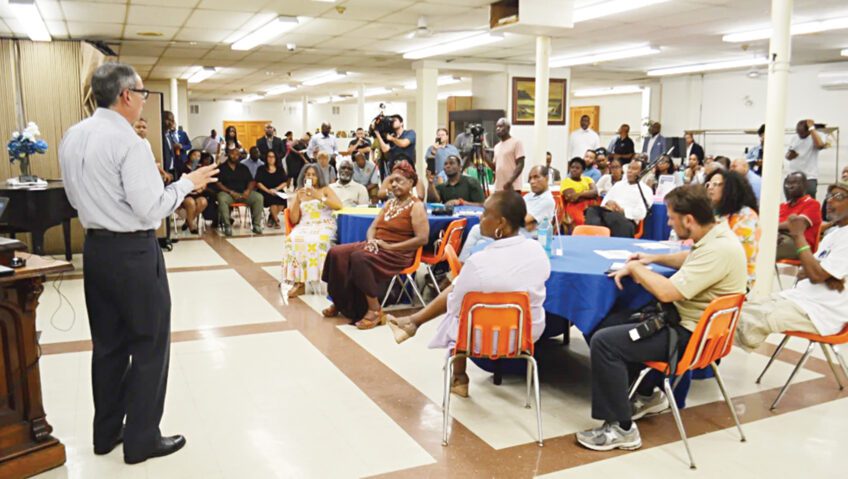
Nine months after the official end of the COVID-19 pandemic, mental health providers are only starting to grapple with the effects of the years-long health emergency on young people.
Experts cite increased anxiety and depression, greater dependence on parents and higher rates of attempted suicide as worsening mental health trends in youth that predate but were exacerbated by the pandemic and related safety measures like isolation and quarantine.
Youth in communities of color who saw greater COVID-19 impacts and who might have a more difficult time connecting with traditional therapy methods are especially hard hit.
“We’ve seen an increase in need, but a lack of desire from the youth to actually participate in particular mental health services,” said Darryl Huggins, who runs Beats, Rhymes and Life, a hip-hop-based therapy program run by Children’s Services of Roxbury. The program aims to bring more culturally congruent mental health supports to kids in Black and brown communities.
Sarah Tannenbaum, senior director of outpatient clinical services at the Baker Center for Children and Families, recalled one patient she worked with before the pandemic who struggled with selective mutism — an anxiety disorder that makes someone unable to speak in certain situations.
After the first course of treatment, in which Tannenbaum guided the girl to speak with people in the Baker Center office or to place an order somewhere like Dunkin’, she was fully and effectively able to communicate. But, following months of isolation during the pandemic, she began to struggle again and required a return to treatment.
The deaths caused by the disease also affected youth, especially in communities of color which experienced higher rates of COVID-19 infection and death.
Huggins recalled one young woman he worked with whose mother died from COVID-19. Her father, struggling with the grief of losing his wife and having to be a single parent led to his daughter not being able to meet her needs. Huggins said she was left feeling hopeless, with her desire to want good things for herself almost completely diminished. That was made worse by diminished acknowledgement of her situation in the countless others left with dead loved ones.
“Millions of people died, and a lot of these people were the siblings, the parents, the grandparents of these young adults that are in the community now,” Huggins said. “I don’t think that they were supported to properly grieve or to properly come out of that grief and know how to move forward with their life.”
U.S. Rep. Ayanna Pressley highlighted challenges to youth mental and behavioral health in a letter sent earlier this month to the U.S. Department of Health and Human Services.
She also pointed to simultaneous challenges that piled on at the same time as the pandemic, like an economic recession, ongoing climate crisis and national reckoning around police brutality and racial justice.
“It is incumbent on us as policymakers to recognize that the status quo approach will not bring about the meaningful and equitable care our children need and deserve,” wrote the Dorchester congresswoman, who represents the majority-minority 7th District in Massachusetts.
The situation was also worsened by declining numbers of mental health professionals to address the needs of young people. According to a December report from the Association for Behavioral Healthcare, as of May 2023 there were over 750 vacancies in the Massachusetts Children’s Behavioral Health Initiative, a MassHealth behavioral, emotional, and mental health program. The same report identified that fewer staff were being hired than were leaving — for every 10 that left, eight were hired.
That was caused, at least in part, by challenges around insurance reimbursement rates that led many mental health professionals to switch fields or strike out on their own in private practice, Tannenbaum said.
Adapting to pandemic changes has pushed organizations to shift how to reach out to and work with youth. At Children’s Services of Roxbury, Huggins and his Beats, Rhymes and Life program went mobile, gearing up a 14-passenger bus with solar panels, acoustic foam padding, brightly colored bench seating and a recording booth to bring the program out into the community.
Citing his own son, who struggled as the world switched back from virtual classes and programing to in-person, Huggins said the staff at Children’s Services of Roxbury worried their participants would be hesitant to come to them, so they started going to the kids instead.
“Once we did have a little bit of space to begin engaging again in person, we knew that there was going to be resistance for them to come to us in our office,” Huggins said. “We immediately designed ways for us to go to them in their community.”
Many of those adjustments have lasted. Tannenbaum said that despite bleak statistics, “a lot of really good things” have also come out of the pandemic.
The Children’s Services of Roxbury’s Hip Hop Therapy bus is still on the streets, now welcoming four or five kids at a time rather than the two to three it started with under pandemic restrictions. Since they launched the bus in May of 2021, Huggins estimates they’ve served about 250 kids across the city.
Services like telehealth appointments have also led to expanded access. Before the pandemic, appointments over video call were restricted due to insurance reimbursement, but now hefty snowstorms or other inclement weather that might have previously led to rescheduling or cancelling appointments now means asking patients to sign into a video call.
Tannenbaum said the Baker Center also serves families from New Hampshire or Connecticut who can now access care over Zoom, rather than driving across state lines to the organization’s facilities in Boston or Waltham.
Video appointments also allow providers to get a glimpse into the home, making it possible to provide more specialized care to patients, Tannenbaum said.
“Now we can zoom into their home and there’s a dog and there’s the little brother and there’s all that chaos of the home,” Tannenbaum said. “Instead of asking our patients to take what we teach them in the clinic and translate it to the home environment, we can actually join in the home and get to know people in a different way.”
And the struggles from the pandemic have shone a brighter spotlight on the same mental health issues young people are facing. Influencers on social media or prominent figures like Simone Biles are openly discussing their mental health challenges, which Tannenbaum said may be decreasing stigma around mental health.
“We have seen teens saying things like, ‘we need treatment,’ asking for mental health support,” Tannenbaum said. “I think, in many ways, some of the stigma around mental health seems to be subsiding and, hopefully, making more normalized that people need support at times.”






